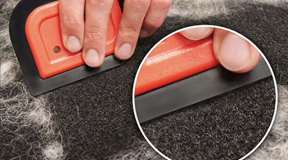To help you find the best detailing spray and save you time refer to our list of car detailing products. Windshield washers are fairly reliable. When they fail, it’s usually the result of a clogged nozzle or a dead pump. Here’s how to diagnose and fix both problems. Windscreen washer fluid is one of those maintenance items that you might overlook.
Step 1: Check the fuse
With the car parked in a quiet place, operate the washer and listen for the whirring of the pump. If there’s no sound, head right for the fuse box. If the fuse is blown, it’s usually a sign of a dead pump motor or one that’s ready to check out. If it blows again, replace the motor (see Step 4).
Step 2: Clear clogged nozzles
If you hear the pump going but don’t get fluid, you probably have clogged nozzles. Lift the hood and trace the washer hose from the nozzles back to the reservoir. Somewhere along the route, you’ll find either a plastic barbed connector or a round one-way check valve. Disconnect the tubing there and try the washer again. If fluid squirts out, you know the nozzles are plugged. Clean the nozzles by pushing a small pin in to loosen any debris, then blow the clog back down the hose and out the end that you disconnected.
Step 3: Clean dirty electrical connections
If you don’t hear the pump and the fuse is OK, the problem is usually a poor electrical connection at the pump or a bad pump. Most car manufacturers mount the washer pump near or inside the washer fluid reservoir. To locate your reservoir, simply follow the washer hose. If your reservoir is located in the engine compartment, access is simple. But many are hidden inside the front fender. Remove the wheel and the wheel line fender liner. Then you’ll have access to the reservoir and pump. Remove the pump wire connector and have a friend operate the pump switch while you check for 12 volts with a digital meter at the connector. If you don’t have voltage, the problem is probably in the washer switch or the wiring. That’s the time to take the vehicle to a pro.
If you have voltage, clean the terminals and coat them with dielectric silicone grease. Try the pump again. If it works, your problem is solved. If it doesn’t, replace the pump. The main cause of pump failure is repeatedly running the motor while the reservoir is empty. So try to keep your reservoir full to avoid dealing with replacing a bad one.
Step 4: Replace the washer pump
Check with an auto parts store for a “direct-fit,” not a universal-style replacement. If one isn’t available, buy directly from the dealer. If your reservoir is located inside the engine compartment, remove the retaining clips and lift out the entire unit and remove the pump. If it’s in the wheel well, just remove the pump (Photo 4). Some pumps are held in place by a rubber grommet, others with retaining rings or clamps. Follow the instructions included with your new pump for installation advice.
Required Tools for this Project
Have the necessary tools for this DIY project lined up before you start—you’ll save time and frustration.
- 4-in-1 screwdriver
- Adjustable wrench
- Air compressor
- Air hose
- Impact Wench
- Rags
- Safety glasses
- Socket/ratchet set
- Voltage tester
- Wrench set
You’ll also need a volt meter, a trouble light and a pin for clearing the nozzle.
Required Materials for this Project
Avoid last-minute shopping trips by having all your materials ready ahead of time. Here’s a list.
- Dielectric silicone grease
- Washer fluid
- Washer pump




